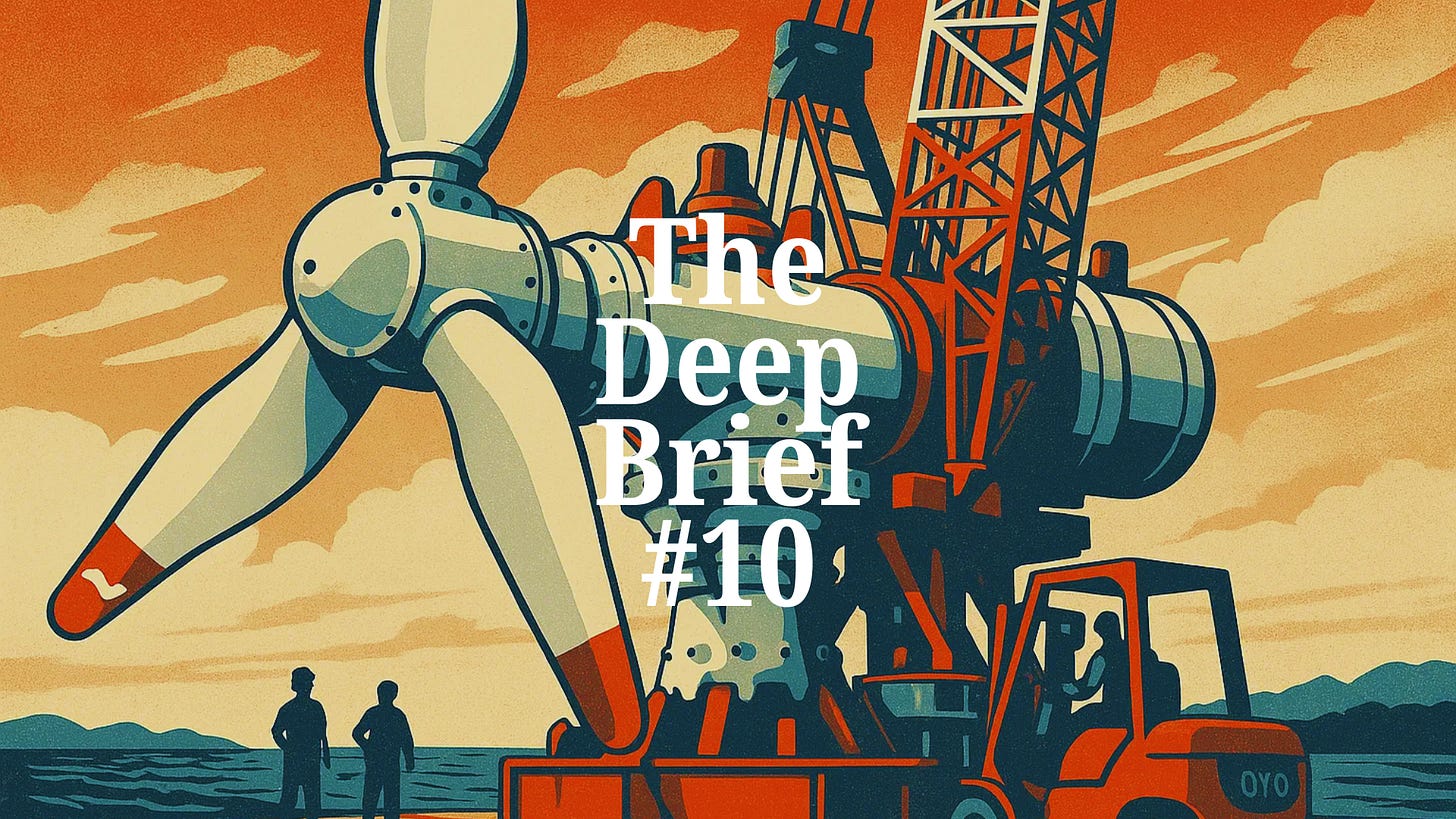The Deep Brief #10 | Friday 8th August 2025
Your end-of-week ocean intelligence, built to inform, agitate, and equip you.
Each week, I scan global headlines, frontline campaigns and scientific papers to bring you the most urgent, overlooked, or powerful stories shaping our relationship with the sea. It is unfiltered, sometimes uncomfortable, but most definitely unmissable.
Three deep dives. Three quick hits. One hard truth from the sea.
Deep Dives
Rogue waves, explained at last
Imagine calm seas. Then, out of nowhere, a wall of water the height of a building rises and swallows the horizon. Once dismissed as sailor’s myths, rogue waves are now proven by science, rare, violent and able to strike without warning. New research shows they form when separate wave systems collide and merge their energy in ways traditional models couldn’t predict. Cracking this code could transform safety for ships, offshore rigs, and coastal towns.
Read more →
A yellow brick road on the seafloor
Over a kilometre down in the Pacific, scientists stumbled across a golden, brick-like pathway straight out of Oz. It’s no fantasy. This rare volcanic rock formation offers fresh clues to the tectonic forces shaping the seabed and the hidden history of our planet’s restless crust.
Learn more →
The deep sea goes live
For the first time, Argentina is livestreaming a deep-sea expedition. Anyone can now watch the abyss in real time, ghostly jellyfish drifting past the lens, coral forests glowing in the dark. Beyond wonder, this kind of access sparks global engagement in protecting fragile deep-sea habitats before industry moves in.
Watch the livestream →
Three Quick Hits
Smarter hurricane forecasts
A new program will feed near-real-time ocean data into storm models, aiming to give earlier, more accurate warnings that save lives and livelihoods.
Read more →
UN plastics treaty talks at risk
Negotiations are teetering on deadlock as countries clash over timelines, targets, and accountability. The stakes: whether the world can agree on binding measures to cut plastic waste.
Read more →
Blue whales are going silent
Researchers are recording a steady drop in the pitch of blue whale songs, a change that could carry vital clues about ocean noise, climate change, and shifting whale behaviour.
Learn more →
One Hard Truth
Japan’s tidal power milestone
This week, in the Naru Strait, Japan has switched on its first megawatt-scale tidal turbine, the 1.1 MW AR1100. Using the moon’s pull to generate predictable, clean energy, it will help the Goto Islands cut diesel use and emissions, a big step for marine renewables and island energy security.
Yet, tidal turbines are not without cost. Fish, seabirds and slow-moving mammals risk collisions with the blades. The hum and vibration can disrupt echolocation and communication in whales and dolphins. Turbines and cables can also alter currents, sediment movement and electromagnetic fields, subtly reshaping entire ecosystems.
If this technology is to scale without harming the seas it depends on, developers must choose sites with care, design for wildlife safety, monitor long-term impacts, and adapt when problems emerge. Without that, the ocean’s newest climate solution could become another pressure point for marine life.
Read more about the turbine’s development →
Final Thought
This week’s stories could all sit in the same chapter of an ocean story, one where we’re finally learning more about the sea, but still making big moves without always thinking through the consequences. We’re figuring out the truth behind rogue waves once thought to be sailor’s tales, streaming life from the deep in real time, uncovering strange volcanic landscapes and building turbines that pull power from the moon’s pull on the tides. At the same time, the ocean is pushing back in its own way, through storms, changing currents, and shifting ecosystems.
Japan’s new tidal turbine is a good example. It’s a huge step for renewable energy, but also a test of whether we can innovate without harming the ecosystems we rely on. The deep sea is still the least explored part of our planet, yet too often we charge in with the same approach we’ve taken on land, moving fast, scaling up, and assuming nature will adapt around us.
The truth is simple. The ocean is not a backdrop for our climate solutions. Every action we take, from tracking currents to installing turbines, changes the lives and systems already in motion below the surface. We already have the knowledge and the tools to make clean energy and healthy seas work together. Whether we choose to use them will decide if the ocean’s story this century is one of recovery or of loss.
Thank you to everyone who has become a Founding Member or paid subscriber this week. You are the reason we’ve stayed in the top five Climate & Environment Substacks worldwide, reaching a truly global audience.
Your support means these stories are free for anyone, anywhere, no matter their geography or circumstances, because the truth about our ocean should never be locked behind a paywall.
See you next week.
– Luke



